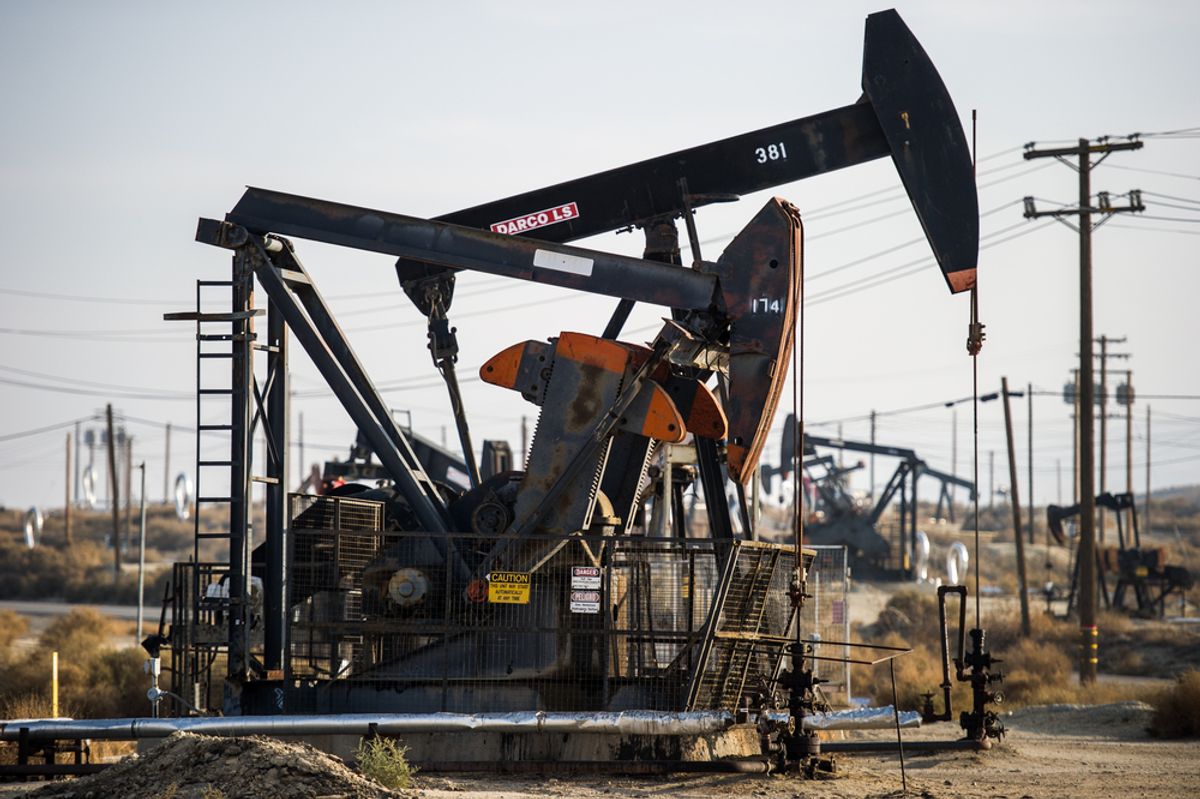The fracking industry is spewing a lot more methane into the atmosphere than federal regulators think, a series of studies published Tuesday by the Environmental Defense Fund reveal.
What that means is that, at least in North Texas’ Barnett Shale, where the research took place, natural gas -- which burns cleaner than coal but acts an incredibly potent greenhouse gas when leaked directly into the atmosphere -- is having a much larger impact on climate change than we realize .
Altogether, the collection of 11 papers by scientists from 20 universities and private research firms conclude that emissions of methane -- the impact of which on global warming is 35 times greater than that of carbon dioxide, over a 100-year period, and even more damaging in the short-term -- in the Barnett Shale are 50 percent higher than what the EPA estimates. They're coming, explains EDF chief scientist Steve Hamburg in a blog post, from "a small but widespread number of sources across the region’s oil and gas supply chain," a major, 5,000 square mile operation that altogether accounts for 7 percent of the nation's total natural gas output.
The scientists call those leaky sites "super-emitters." At any time in the Barnett Shale, they estimate, you can find about 50 well pads, one processing plant and between two and three compressor stations that fit the bill -- that's only 2 percent of the total sites in the region, but they're responsible for 19 percent of emissions.
So why does the EPA believe that methane emissions are declining, even as fracking activity expands? These aren't the first studies to suggest that the agency is lowballing its estimations. Part of the problem, suggested David Allen, a chemical engineering professor at the University of Texas who was not affiliated with the study, is that the EPA's data is based on the assumption that “things are going to operate as expected," when obviously they are not.
In fact, according to Hamburg the majority of these emissions are coming from "the sort of leaks and equipment malfunctions that are relatively easy to prevent with proper and frequent monitoring and repair practices" -- it is, in other words, a fixable problem. The industry, naturally, is pushing that interpretation. Steve Everley, a national spokesman for the oil industry lobbying group Energy In-Depth, told the Texas Tribune, "there’s nothing inherent about Barnett Shale development, or even shale gas development nationwide that leads to high leakage rates," and stressed that the industry should be trusted to address these issues on its own.
Hamburg isn't buying it. "Easy and affordable as these solutions are, many companies simply are not using them," he writes. "As long as they remain optional, it’s likely to stay that way."
This gulf, between fracking done right and what's happening in the field, has been identified in previous studies becomes incredibly relevant as the White House gears up to address the problem of methane pollution -- very soon, the EPA and the Bureau of Land Management will be releasing their proposed rules for doing so; together with voluntary industry action, they hope to cut emissions by 40 to 45 percent. Other research, meanwhile, has suggested that even if fracking operations could be made entirely leak-free, natural gas is much better off being left in the ground. “One thing is clear," wrote the authors of that paper, which was published last fall: "We can’t simply frack our way to low emissions.”

Shares